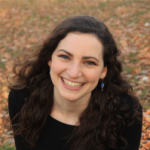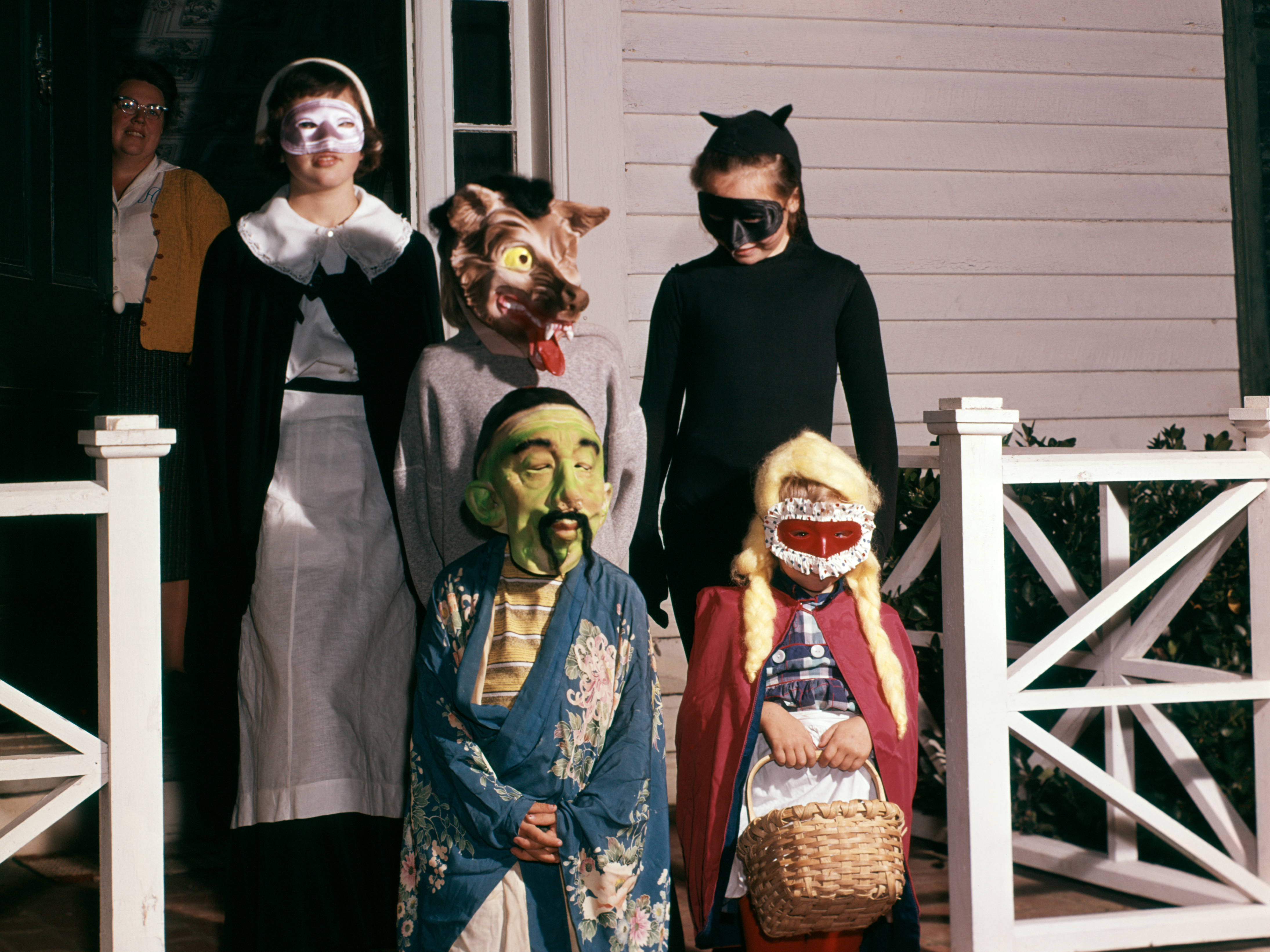- Halloween costume trends follow cultural trends.
- Before mass-produced costumes existed, people made their own witch and ghost outfits.
- Popular costumes have included crepe paper aprons, blood and gore, and “sexy” versions of anything.
Ever since the late 19th century, Americans have been dressing up to celebrate Halloween. The costumes people choose to wear are always changing, influenced by popular culture and current events.
For example, bloody, gory Halloween costumes became popular in the 1980s following the release of the horror movie “Halloween,” and the sales of presidential masks have successfully predicted nearly every US election.
Insider spoke with Lesley Bannatyne, a Halloween expert who has authored several books about folklore and popular culture, to track popular Halloween costumes through the years. Here are 15 photos of Halloween costumes over the past 150 years.
From the 1870s to the 1890s, people mostly made their own witch and ghost costumes.

There were no store-bought costumes in the late 1800s, so people dressed up as classic symbols of the Halloween holiday with looks they made themselves.
"The things that appealed to people were the things that they loved about Halloween, so you saw a lot of handmade witch costumes and ghost costumes," Bannatyne said.
Victorian America was also fascinated by the Far East.

Any costumes that were what people would have called "oriental" or "exotic," such as Egyptian princesses, which were popular choices in the late 19th century.
"Anything that was exotic and in another world, either on this planet or another dimension, was really interesting," she said.
Mass-produced paper costumes and buckram masks hit stores between the 1900s and the 1920s.

Halloween became more popular at the turn of the century, celebrated in civic institutions such as schools and parades. Almost everyone was wearing mass-produced costumes made by Dennison Paper Company.
"Everybody looked the same, those were aprons with cats or little witches printed on them, or hats or paper masks. They were meant to be worn once and thrown away, like crepe paper," Bannatyne explained. "That's the first time Halloween got a standard color scheme - yellow, black, orange, purple - with paper products.
Disposable paper costumes made way for boxed character costumes in the 1930s and '40s.

Ready-to-wear boxed costumes usually included a plastic mask and a rayon costume depicting well-known characters from cartoons, books, and the radio.
According to Bannatyne, these costumes were considered a luxury in the 1930s, and only became more affordable after World War II.
Television defined popular culture in the 1950s, and Halloween costumes followed suit.

"Popular culture went from radio to television in the '50s, and all of a sudden everybody is on the same page," Bannatyne said. "You couldn't have standard Halloween costumes that everybody knew about until we had a common culture."
Sought-after costumes included Little Orphan Annie, Bowinkle, and Disney characters such as Mickey and Minnie Mouse, Donald Duck, Peter Pan, Tinkerbell, and Snow White.
The television trend continued into the 1960s.

Costume options in the 1960s got even more expansive as a popular culture solidified.
"You have The Addams Family, and Flipper the Dolphin, The Beatles, Barbie," Bannatyne said. "[Costumes are] going into popular culture, even to products."
"You can just look at the movies and look at the costumes and they overlap a lot," Bannatyne said of trendy costumes in the 1970s.

In particular, Bannatyne named the coneheads from "Saturday Night Live" and John Travolta in "Grease" as popular costume choices.
E.T. dominated the 1980s.

"E.T. The Extra-Terrestrial" was released in 1982. It won numerous Oscars and remains one of the highest-grossing movies of all time. Naturally, everyone wanted to dress up as the friendly alien.
Costumes took a dark, gory turn in the 1980s.

John Carpenter's bone-chilling 1978 movie "Halloween" added an element of horror to the holiday that hadn't been present in years past, paving the way for gory costumes in the 1980s.
"It was always spooky, and it was always otherworldly and weird, but it wasn't bloody and violent until John Carpenter's 'Halloween' cracked it open," Bannatyne said.
Costumes of brand-name products were big in the 1990s.

"[Halloween] has always had a wonderful political subversive theme to it, so you always see costumes that comment on what's going on, but in the '90s it gets even more ironic," Bannatyne said. "You get people dressed as Tootsie Rolls or Lifesavers, McDonalds - just about anything you can see, you can turn into a costume."
In the 2000s, political scandals reigned supreme.

"Political scandals and taglines make for great costumes - to this day, that Nixon mask is one of the most popular masks," Bannatyne said.
Bannatyne added that sales of presidential Halloween masks have correctly predicted the outcome of every election except for 2016 ("Trump masks were selling wildly, but no one could decide whether that was because it was pro or con").
In the aughts, "sexy" versions of costumes became prevalent and remain a staple of Halloween parties today.

Some costumes call for sex appeal, and some don't. But the aughts ushered in an era of gratuitously "sexy" versions of just about any character, food item, or career.
"In the '80s and '90s people would always ask me 'Why is Halloween so violent?' Nowadays, they ask 'Why is Halloween so sexy?'" Bannatyne said.
Concerns about cultural appropriation in Halloween costumes have only become mainstream in the last five years, according to Bannatyne.

The term cultural appropriation is used to describe the adoption of elements in a minority culture - typically one that has been historically oppressed or discriminated against - by members of the dominant culture, by those who wield power in a society. In the context of Halloween, this can manifest itself in the form of costumes that draw on exaggerated and insensitive cultural stereotypes.
"[Halloween] has always gone off the rails a little bit, but people are much more aware of that now," Bannatyne said.
This year, we predict costumes inspired by breakout TV shows to be a huge hit.

This year, 'Stranger Things' costumes are expected to be popular, considering the huge success of the show and the recent announcement of season 4.
The premiere of Euphoria also dominated television, and Euphoria-inspired hair and makeup will definitely make an appearance this Halloween.
Ultimately, Halloween costume trends follow cultural trends.

If you want to know what the next big Halloween costume will be, just pay attention to pop culture and big stories that everyone is talking about.
"Halloween follows whatever the culture is doing and is a really good bellwether for what we're thinking about," Bannatyne said.
- Read more:
- You can decorate your yard with a giant 'Beetlejuice' inflatable for Halloween this year
- 13 makeup looks you can do at home to look like a real-life Disney character this Halloween
- 24 photos that show the shocking amount of sugar in popular Halloween candies
- 25 Halloween beauty looks you should try

